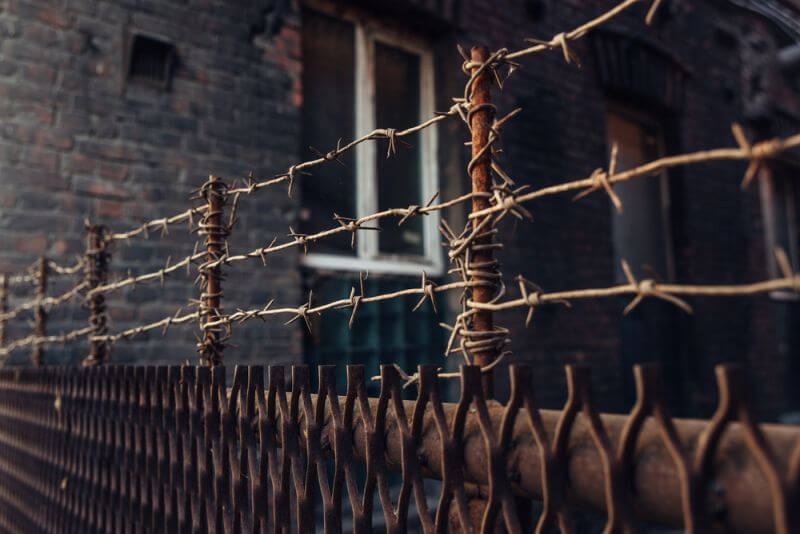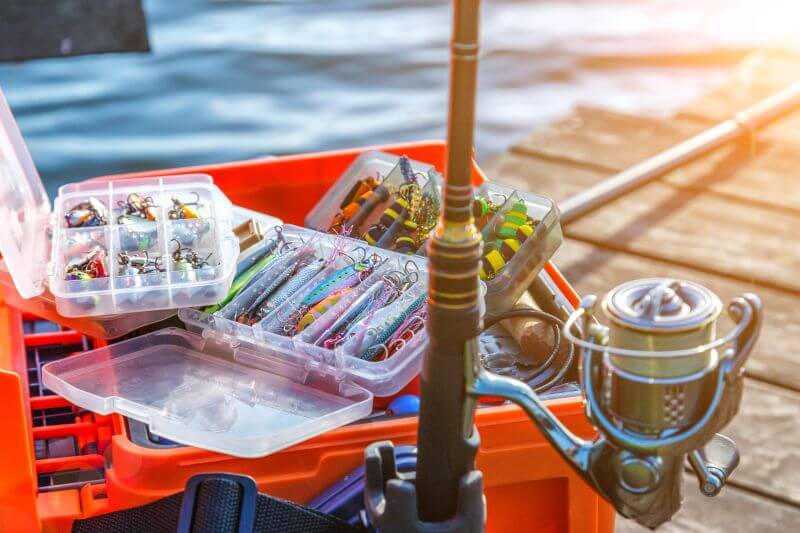Caching is a tried and true solution to the problem of putting all your eggs in one basket.
Every journey begins with a single step. If you have yet to take it, one simple cache will set you on that road.
Once you see how easy it is and the peace of mind it gives you, you may decide you want more caches.
Briefly:
- “Don’t put all your eggs in one basket.” is what caching is all about.
- There are many times of caches, so build caches that meet your most urgent needs first.
- Outdoor caches must be water tight if stored long-term or your supplies will end up useless. PVC and PVC Glue are great materials for making sure this does not happen.
- Some soil types cause rubber gaskets to rot, so ammo cans and other containers that incorporate them are poor choices for burial in many areas.
- Caches do not need to be expensive or complicated. I have been able to find small plastic ice chests everywhere I travel, and they work great for many types of caches. They are cheap, water-resistant and hide in plain sight.
- Caches should generally be sterile, meaning impossible to tie back to you.
5 Reasons to Cache
If you’re not sure why you should build caches, then take a minute to think about the following:
- What would your life be like without the resources you have accumulated in your home?
- What if you had to leave right this moment, knowing that your home would not be there if you come back?
- Caching is an effective survival strategy that is all about redundancy and saving for a rainy day.
- Caching is a correct principle that underpins antifragility, survivalism, self-reliance and emergency preparedness.
- “The more you know, the less you carry!” has some truth to it, caching makes it possible to carry less and have access to lifesaving supplies.
Types of Caches
As many thing in life, there are many types of caches, and you should be aware of each of them refers to, so you could cover them step by step and finally ensure your survival.
Supply Cache: Redundant deposits of supplies necessary to sustain life.
Primary Equipment Cache: An equipment cache to get you back on your feet and on your way if your residence is destroyed or captured or equipment at a retreat that might be looted if it was discovered before your arrival. It might contain a complete load out or it could contain food, tools and seeds.
Travel Cache: Usually one of a series of supply caches containing primarily consumables to sustain a journey such as food, fuel, medicine, hygiene items and ammunition, thus making it possible to travel a far greater distance.
Exit Strategy Cache: A cache to aid your flight from an (possibly hostile) area. These usually contain a go bag which in turn contains: money, valuables, medicine, travel documents, maps, compass, phone, SIM card, data, radio, transportation or other items to aid in getting back to friendlier territory.
Operations Cache: This cache contains mission-critical equipment for pre-planned missions and operations. You may be able to carry certain weapons openly today, but there is no guarantee that will always bet the case.
Transition Cache: A transition cache is a tradecraft-based operations cache used to transition between wild lands and populated areas. They may contain disguises or just a pair of battery powered clippers, hygiene kit, clothes that blend in, and money so you can make yourself look like you came from up the street as opposed to down out of the mountains.
How To Build a Small Bunker in Your Backyard with $400
Temporary Cache: Just as miners, mountain men, Native Americans and pioneers used temporary caches while traveling to avoid robbery or trouble with local law enforcement, survivalists bugging out or trying to return home sometimes use temporary caches to hide valuables, food or weapons. Temporary caches are a sensible precaution when entering a town that may be a non-permissive environment or is simply an unknown.
Field-expedient Cache: It is sometimes necessary to lighten a load to enable faster movement. Constructing a temporary field-expedient cache enables the survivalist to cache equipment or supplies, keep them out of the hands of enemies and possibly recover them in the future.
12 Principles of Effective Survival Caching
1. Buy vs Build
Many purpose-built survival cache solutions have appeared on the market in recent years. This offers consumers a choice: to buy everything you need in one place or to build the set yourself?
Buy: There are a lot of companies selling convenient manufactured cache containers. Most commercial caches will survive burial if properly packed. The downside is that most are expensive.
Build: If you build and intend to bury, my advice is to build with materials designed to survive being buried without leaking much longer than the term you intend the cache to last. Ferrous metals do not fare well in soil. Do not bury caches with rubber gaskets. Rubber gaskets rot in many soil types and can cause the cache to leak. Ammo cans have two strikes against them since they incorporate both ferrous metal and a rubber gasket.
2. PVC
Using PVC and gluing the end caps provides a truly water-tight seal. If I need to access a cache repeatedly, I install a cleanout plug. PVC is inexpensive, non-magnetic, non-ferrous, rubber free and does not leak.
If you cache a lot, you will realize that all you need is a container than works. Why spend more time or money than necessary?
3. Number 10 Can Cache in a PVC Tube
You can afford more caches if they cost less and can be built quickly. Simple food caches can be built out of 4 number ten cans.
One can of rice, two of beans, and fill an empty can with salt, honey, bullion/soup/gravy base, spices, matches, water treatment of your choice, some hanger wire and other consumables and seal it. If sealing it would present an obstacle, use a plastic lid for this one. Add a little meat and just one simple, inexpensive food cache provides a lot of meals and even pots to cook them in.
If you want to roll first class, substitute number 10 cans of Mountain House Freeze Dried Foods. Then you will not even need to add meat. This cache is very easy to mass produce. Vary the contents and length as necessary to meet your needs.
4. Location, Location, Location
If you cache, only to have your cache become unreachable, be discovered or destroyed by construction or the curious, your energy will be wasted. Worse yet, enemies may be alerted there is a survivalist in the area.
You may not be able to predict the future, but you can research zoning, history, local habits and generally keep your eyes open.
5. Cache Locations
- Submerged in Water Tight Containers – Usually attached to a line anchored near a land mark of some sort. Most effective locations are natural lakes or other water that is unlikely to be drained, searched or to lower substantially. Attaching cables to caches may enable them to be lowered into a pipe, vent, underwater or into a crevice or raise them out of sight. The problem is, that unless the cordage connected to the cache looks like it belongs there or is hidden from view, it may lead someone right to it.
- Trees or Stumps – Hollowed out limb or hollow of a dead tree or stump where dead trees are far too numerous to warrant attention and will not be logged can be effective. Urban tree caches must often be installed above ground.
- Rocks
- Buried
- Structures – Fortunately, structures usually have plenty of hiding places and plenty of visual clutter to hide the presence of a cache, but urban places can also have a lot of eyes, so you may want to use a lens finder to sweep for cameras and choose an area that is observable from as few angles as possible.
- In Walls or Behind False Walls
- Under Concrete Foundations, Pads or Flooring
- Crawl Spaces and Attics
- Rooftops
- Negative Spaces
- Duct Work, Vents – Real or false.
- Cabinetry
- Under Stair Cases
- False or Unused Pipes
- Welded Tubular Construction
- Hidden Compartment
- Elevated: High in a tree canopy, on a tower, platform, rooftop, cliff or similar feature. Woodsmen have been doing this for ages to prevent bears from being able to destroy their caches. Elevated and above ground caches can be also buried or covered. Even a couple of inches of soil or material can fool a casual observer that may otherwise become curious.
6. Recovery
Access to the site will be a primary consideration in choosing location. Caches should be able to be retrieved during the types of calamitous circumstances that would necessitate retrieval.
- Retrieval: If you buried your cache, retrieval will probably need to occur under the cover of darkness and/or a blind erected over the cache site. Multispectral camo netting can be used to help hide you from most common sensor technology.
- Easy To Find: Caches do not need to be easy for anyone to find, just those who will use the cache. I often hear the opinion recycled that cache locations should be easy to find day or night in any season and easy to describe the location to another and to photograph cache sites or make sketches of the sight. I prefer to maintain OPSEC for caches sites by applying an easily remembered algorithm or cipher system. This way, written instructions for finding caches can be hidden in plain sight in the form of a seemingly unrelated document ore as meaningless gobbledygook.
- Documentation: Unencrypted images and documents are an intelligence gold mine. If you create anything like this, be sure they are encrypted, offline and cached.
7. Access
With what frequency will the cache be accessed? Some caches must be able to be accessed repeatedly and frequently while others may be accessed only once.
If you need to access a cache frequently, this will likely limit the distance you are willing to travel and impact the design since you will not want to have to dig it up every couple of weeks. Concealed caches are much more convenient to access regularly.
8. Term of Storage
The duration of time that the cache will be in place will affect everything from how materials must be stored to the construction of the cache itself.
9. Moisture
Moisture is your enemy, and it is relentless.
- Bag Items Separately: Certain items are best cached separately in order to preserve them. Bag items within each cache separately according to moisture content and chemical composition in order to separate reagents. Otherwise you may dig up a bunch of gear fused into a conglomerate of useless junk. LOLSAK® bags work well. The new OPsak bag survives higher temperatures, is odor proof and is still food safe, making it very useful for a multitude of survival applications.
- Desiccant Packets: Desiccants are a cost-effective way to fight rust and premature spoilage.
- Oxygen Absorbers: Chemically, rusting is basically metal burning in slow motion since oxygen consumes ferrous metal as is combines it with oxygen.
- Gas Displacement: Displacing air with inert gas, such as pure nitrogen, displaces air and all of its component gases including oxygen, water vapor and a small amount of carbon monoxide, which can promote rust or bacterial growth.
- Electric Dehumidifiers: If you are building a cache into a structure with electrical wiring or in the proximity of wiring, installing a small electric dehumidifier (like many of use in gun safes) is an effective way to combat moisture.
- Rust Prevention: Zerust® manufactures a line of rust preventative bags, vapor tabs, oils and other products that fill the bill nicely.
10. Temperature
When storing fuel, water or anything potentially damaged by freezing in a clime where it may freeze, you may need to add antifreeze.
In hot climbs, food spoils much more quickly, but deep enough burial has a stabilizing effect on temperature since the Earth has such an immense thermal mass for purposes of conduction.
11. Camouflage
How much trouble those searching for the cache will go to, and how important the items you cache are to you, both factor into how much effort to decide to put into camouflage. Camouflage applied to a cache should also take the following considerations into account:
- Urban vs Rural vs Wilderness: May dictate the use of overt or covert camouflage.
- Visual: In addition to the spore or sign evident when turf, sod or topsoil are disturbed, when subsoil is disturbed, it also leaves signs visible to the naked eye, such as depressions or mounds, that are often visible for decades, centuries or even millennia. To avoid this, the backfill must be compacted to match the soil’s original density.
- Abundance of Good Cache Locations: Someone scavenging for a survival caches will search areas around popular camping areas and lines of drift for good cache sites. In areas where they are few, it might be easier to find a cache than you think. In areas where cache sites are abundant, it becomes considerably more difficult.
- Countering Metal Detection: Depending on what you have cached, the importance you place upon it, and the resources at the disposal of those looking for it. You may want to seed the area around the cache site with brass from firearms, junk or ferrous chemicals, but it is most effective to use a cache location that has already been organically so seeded with metals with a similar bulk, depth and detection signature to the cache.
- Less Is More: The less you disturb the environment, the less sign there is to find.
- Hidden in plain sight: Imagine you want to store sand to fill sandbags or mix concrete for a contingency plan. You might install a sandbox some other typical improvement. Just dig it deeper that you need and you will have a spot for your sand. My grandfather used a similar rouse to hide a large quantity of coal on a property.
- Odor: Wildlife and dogs detect scents. Bury food in bear country and you are asking to get your cache dug up and eaten.
12. Sterile
Do not break any laws, but some types of caches should be sterile, meaning free of fingerprints, fibers, hair, bar codes, receipts, labels or numbers that could be tied back to you. This is easiest to achieve if you buy supplies to be cached new (to you), cache them right away and wear gloves when handling them.
When operating outside your home country, make sure caches are also sterile of brand names, trademarks, nationality that could connect the cache to you, your home country or its allies.
Purchase materials and contents discretely, with cash, in small quantities, with unrelated items and without a cell phone on your person or in your vehicle.
This article has been written by Cache Valley Prepper for Survivopedia.










Mahatma Muhjesbude | December 25, 2017
|
Just recently they came out with a small handheld ‘construction’ tool called a ‘Walabot” or something like that which has the wall penetrating and actual VISUAL capacity to actually see wires and plumbing behind closed walls like, or better than an x-ray. That’s pretty interesting as they are only around a hundred bucks and I wonder how they’d work through human tissue??? But, if they have this readily available to the public,, you can ‘arrest’ be assured that the police will also have a portable one even better, and would be able to scan an entire room wall to wall floor to ceiling in less time it would take to write up the arrest report. forget about hiding ‘important’ things from ‘authorities’. There are ‘other’ ways.
Beckster | December 26, 2017
|
Mahatma Muhjesbude, interesting point. Wondering if covering walls, etc. would help negate the penetration? Just wondering. (sorry for the all caps…can’t turn it off)
leonard | December 26, 2017
|
early 1980’s era popular science magazine had an article about how these scientists had developed a “nano camera” that could see threw walls and mentioned that the military was very interested in it. then later a white supremisist wrote a book titled “the turner diaries” that mentioned just such a device being used to find guns hidden in houses! the government tried to ban that book because of other info like how to form a “cell” type group . the government then planned and carried out the edward r murraha federal building bombing and a copy of “the turner diaries” as well as “war cycles, peace cycles” ( a book on banking history) was found in the seat of tim mc vehies car, thus justifying the banning of said books, but they never managed to band those books!
very easy to get such devices at all levels of cost!
hillbilly | December 26, 2017
|
Double sided-leaded sheetrock. Like you find at the local dentist’s x ray room.
Pingback:Make Your Survival Shelter Invisible With These 10 Tips | Survivopedia | February 12, 2018
|
Anonymous | July 6, 2020
|
just make a fake cache and put fake things inside it,or if the people who are searching for it are using some sort of detector,then put your cache in a place that people would not want to go or put junk metal or junk wood on top.